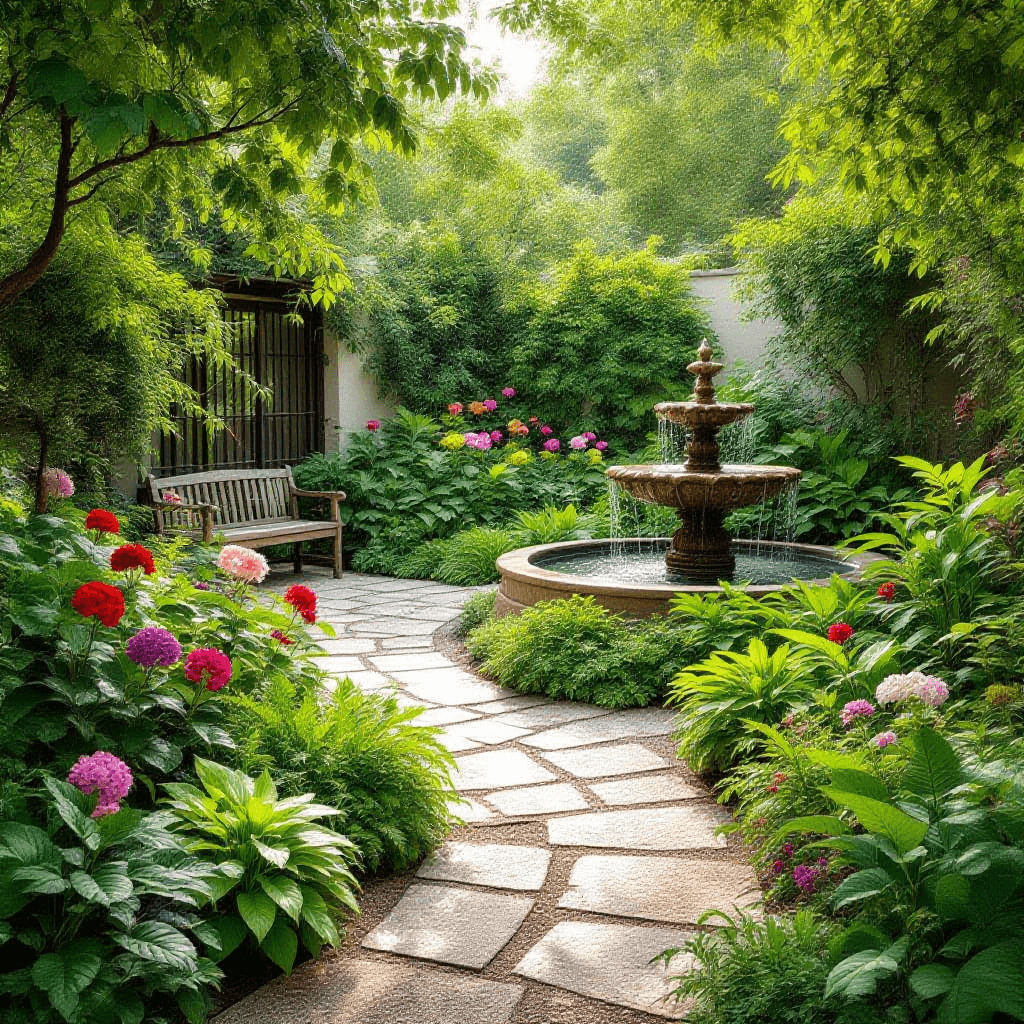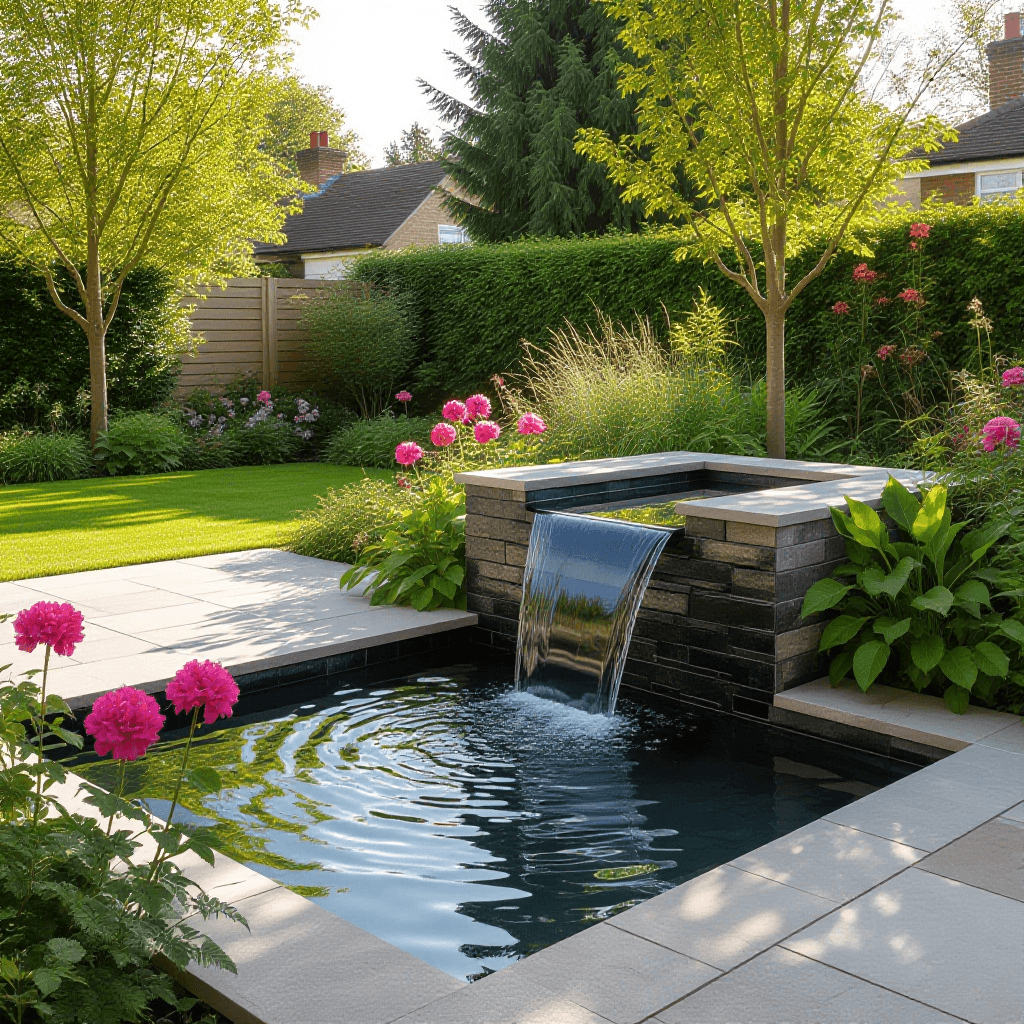Maximizing Space with Vertical Gardens
As urban living becomes increasingly common, the challenge of cultivating a vibrant garden in limited spaces becomes paramount. Vertical gardens present a creative solution for homeowners with small UK gardens, allowing the use of otherwise wasted vertical space. By incorporating methods such as climbing plants, wall-mounted planters, and trellises, gardeners can enhance their outdoor areas while optimally utilizing every available square inch.
One of the most efficient ways to implement vertical gardening is through the use of climbing plants, which can flourish in diverse conditions found across the UK. Selecting the right plants is crucial for success; consider choices such as climbing roses, jasmine, or clematis, which not only grow upwards but also provide a rich visual appeal. These plants can be trained to climb fences, walls, or dedicated structures, transforming a simple vertical space into a beautiful living tapestry.
In addition to climbing plants, wall-mounted planters are an excellent way to add depth and greenery without encroaching on the ground. These planters can either be purchased or made from recycled materials, enabling flexibility in style and budget. Succulents, herbs, or even small flowering plants thrive when arranged in these vertical setups, creating a compact yet lush display. Furthermore, trellises are a versatile tool, serving as both a structural support for climbing plants and an attractive garden feature.
Practical installation tips can significantly enhance the functionality and aesthetic of vertical gardens. Ensure that the wall or structure chosen can support the weight of the plants and the planters. Using quality materials will not only extend the longevity of your installation but will also contribute to a polished look. Regular maintenance, such as watering and pruning, is essential for preserving the beauty and health of your vertical garden. By thoughtfully integrating vertical gardens, homeowners can both beautify their small outdoor spaces and enjoy the benefits of gardening.
Creating Cozy Nooks with Seating Areas
In small gardens, creating inviting and functional seating areas can significantly enhance the outdoor experience. These nooks serve as essential spaces for relaxation, social gatherings, or simply enjoying the surrounding beauty. A well-designed seating area can transform your garden into a tranquil retreat. Various design ideas can be employed to maximize limited space while ensuring comfort and style.
One popular option for small gardens is the use of garden benches. A simple wooden or metal bench can create an intimate corner for reading or enjoying a cup of tea. Moreover, benches can be aesthetically pleasing; adding some outdoor cushions can enhance their comfort and visual appeal. Choosing weather-resistant fabrics ensures that these cushions remain vibrant and cozy even in the UK’s often unpredictable weather.
Bistro sets are another excellent choice for compact spaces. These charming little tables and chairs can easily be folded away when not in use, making them an ideal option for small gardens. A bistro set allows for outdoor dining or morning coffees without occupying too much space. Consider accessorizing your bistro set with a small umbrella for shade, adding a touch of elegance while keeping the seating area comfortable.
Built-in seating is a fantastic way to utilize every inch of your garden efficiently. Incorporating benches along garden walls or around trees not only saves space but also integrates seating naturally into your landscape. With the addition of decorative elements like outdoor rugs, the seating area can gain a cozy touch that entices users to linger. These rugs can also help to define the space, making it feel like a distinct area within the garden.
In conclusion, with thoughtful consideration of seating design, small gardens can become inviting havens that encourage relaxation and social interaction. By integrating comfortable garden furniture and personalized decor, every compact outdoor space can effectively serve as a delightful retreat. These elements work together to create cozy nooks that enhance the overall garden experience.
Incorporating Layers and Textures
One of the most effective strategies for enhancing small gardens is through the incorporation of layers and textures. By organizing plants of varying heights, a gardener can create an illusion of depth and dimension, making the space feel more expansive than it actually is. Taller plants can be placed towards the back or center, while shorter varieties should fill in the front and edges. This arrangement not only adds visual interest but also allows for diverse plant species to coexist harmoniously.
In addition to the vertical layering of plants, the combination of different leaf shapes and colors plays a crucial role in achieving a vibrant garden aesthetic. Selecting plants with varied foliage—such as broad, dark-green leaves alongside fine, light-colored leaves—can stimulate the senses and enhance texture. Incorporating flowering plants with contrasting colors can further enrich the overall appearance, providing a dynamic display that changes with the seasons.
Hardscaping materials like gravel and pebbles can also significantly contribute to the texture of small gardens. These materials can be used to define pathways, create borders, or serve as a mulch alternative around plants. By carefully selecting colorful or textured stones, one can add another layer of visual diversity to the design. Additionally, pathways made of these materials guide the eye across the garden, encouraging exploration while keeping the area organized.
Planting in raised beds is another effective method to implement layers within a limited space. Raised beds can be constructed at varying heights, promoting easy access and maximizing planting potential. Additionally, adding decorative stones around these beds can serve a dual purpose of highlighting your plants and contributing to the overall visual appeal of the garden. The thoughtful integration of layers and textures not only enhances aesthetic value but also ensures that small gardens maintain a manageable and inviting atmosphere.
Choosing the Right Plants for Small Gardens
When it comes to designing a small UK garden, selecting the appropriate plants is paramount for creating a harmonious and vibrant space. To optimize the limited area, gardeners should focus on a careful selection of plant types that combine beauty with functionality. A mix of perennials, annuals, and shrubs can provide various textures, colors, and scents, enhancing the overall garden aesthetic without overwhelming the available space.
Low-maintenance varieties are particularly suitable for small gardens as they require less attention and care over time. Plants such as lavender, geraniums, and sedums not only thrive in compact spaces but also contribute to a stunning visual display. Incorporating these hardy species helps maintain a manageable gardening routine, allowing for enjoyment rather than stress.
In addition to low-maintenance plants, it is essential to select species that offer seasonal interest. This diversity ensures that the garden remains beautiful throughout the year. Plants such as hellebores, which bloom in the winter months, or evergreen shrubs, can provide structure and color even during less vibrant seasons.
Attracting pollinators is also a consideration when choosing plants. Selecting native species, such as foxgloves or bee balm, can encourage beneficial insects to visit your garden, promoting biodiversity. Additionally, implementing a staggered planting strategy encourages extended blooming periods, enhancing both the visual appeal and ecological function of the garden.
Finally, arranging plants effectively is crucial for maximizing the impact of a small garden. Utilizing vertical garden designs, such as climbing plants or tiered container arrangements, can draw the eye upwards, creating an illusion of space. Grouping plants with similar water and light requirements further simplifies maintenance while also encouraging healthy growth. By thoughtfully selecting and arranging plants, gardeners can curate a beautiful and functional landscape that thrives in petite settings.


